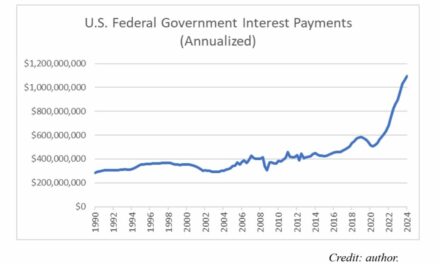We support our Publishers and Content Creators. You can view this story on their website by CLICKING HERE.
When the Associated Press on Thursday declared Republican Dave McCormick the winner of a hard-fought Senate race over entrenched Democrat Sen. Bob Casey, it wasn’t just the latest crest in a Red Wave 2024 election year. It was eye-opening proof that a focused ground game fixated on turning out early and absentee voters when voting runs several weeks long is a blueprint for GOP electoral success.
That fact should have been clear to Republicans long ago. But many in the party and too many campaigns didn’t get it, and conservatives have paid a high political price for failing to learn. So have Americans in general, as evidenced by the past four long years of Joe Biden and Kamala Harris in the White House.
Some Republicans saw the writing on the wall long ago, however. They’ve been watching and taking notes on what Democrats have done in recent election cycles — beyond the 2020 shenanigans under the cover of Covid. Dems get the importance of a long-term commitment to the ground game, of constant connections, particularly with people who irregularly vote at best. They have mastered the art of ballot chasing, as they’ve pushed for expanded mail-in voting.
After the crushing “Red Wave” that wasn’t in the 2022 midterms, some Republicans finally woke up and decided they were going to try to beat Democrats at their own game. They learned that where the rubber meets the road in elections is on the ground.
‘Return on Investment’
Perhaps no conservative organization worked the ground game better than the Sentinel Action Fund. The super PAC, led by conservative grassroots activist Jessica Anderson, developed and carried out a GOTV campaign targeting low-propensity, right-leaning voters and turned them out early for Donald Trump and Republican Senate candidates in Montana, Ohio, and swing-state behemoth Pennsylvania.
Supported by the fundraising ferocity of Tennessee Republican Sen. Bill Hagerty, Sentinel made a difference in electing Trump and McCormick in Pennsylvania and helping Republicans decisively take back the White House and the Senate.
In Pennsylvania, for instance, Sentinel partnered with the National Republican Senatorial Committee (NRSC) and the Keystone Renewal PAC on a $16 million campaign that turned out more than 300,000 low-propensity voters for McCormick, according to Sentinel data provided to The Federalist. The businessman and now senator-elect won by little more than 40,000 votes (six-tenths of a percent) out of nearly 6.8 million ballots cast.
“The one thing I can say for certain is the return on investment for this effort, I think, is going to prove to be the highest ROI of any dollars spent for campaigns,” Hagerty said in an interview Friday with The Federalist.
‘We Were Beaten on the Ground’
In the final days of the 2022 midterms, things looked good for Republicans. Hagerty said he was feeling confident as he campaigned for fellow Republicans as the expected Red Wave approached. Like a lot of his colleagues, the senator was counting. He thought the GOP had a realistic chance at controlling 53, maybe 54 Senate seats on its way to taking back the upper house by the time the dust settled on the election.
It was not to be. While Republicans squeaked out a thin victory to take control of the House, Democrats maintained a narrow majority in the Senate thanks to a few left-leaning independents. After getting over the “shouted-at-the-TV stage,” Hagerty said he spent weeks sorting through the electoral wreckage.
“At a 30,000-foot level, what happened was we were beaten on the ground,” the senator said.
Beyond firing up its base with talking points about the Dobbs decision threatening unrestrained abortion, Democrats had understood and effectively worked the expanded early and absentee voting laws implemented since 2020.
“As unhappy as I was about 2020, by 2022 many changes had been legislated,” Hagerty said. “They were ready. We were not,” he said.
Exhibit A was Pennsylvania, where Dems hustled to rake in early ballots for candidate John Fetterman. Struck by a massive stroke in late spring 2022, Fetterman had amassed more than 900,000 early votes and mail-in ballots, a 700,000-plus lead over his opponent, Republican Mehmet Oz. Not even a hard-to-watch debate with a speech-impaired Fetterman could reverse the tide. Oz couldn’t make up the difference with the Election Day ballots; Fetterman won by more than 260,000 votes.
It a similar story in Nevada, although the Silver State’s universal vote-by-mail law, passed in 2021, and its extended ballot receipt schedule opened the door to more leftist tricks. Republican Senate candidate Adam Laxalt led Democrat incumbent Sen. Catherine Cortez Masto on election night but eventually lost by less than 8,000 votes statewide. Again, chasing ballots made the difference, Hagerty said.
‘It Would Help President Trump’
Hagerty wanted that difference-maker for Republicans in the Senate. So he asked Montana Sen. Steve Daines, the NRSC chairman, if he could lead fundraising efforts for a 2024 ground game campaign.
“I said I’d like to focus on the operational aspects to this, because we can’t get beaten on the ground again,” Hagerty said “Steve was happy to let me do it. He said best of luck.”
So the Tennessee senator set out fundraising and recruiting a team to lead the ballot-chasing campaign. His advisors recommended he call Anderson, former executive director of Heritage Action and a proven conservative grassroots and policy pro.
“When she and I met, I thought, ‘This is the person to lead the operation,’” Hagerty said. “She very much understood the importance of the ground game.” So did Brian Barrett, considered a voter mobilization savant who ran Virginia Gov. Glenn Youngkin’s successful absentee and early vote efforts after leading Georgia Gov. Brian Kemp’s voter turnout operation that drove the Republican incumbent’s bruising 8-point victory over Democrat conspiracy theorist Stacy Abrams.
They had a team with a proven track record. Now they looked to take their plan to court low-propensity voters to the national stage.
“I knew that if we could get this right it would help President Trump and it would help our down-ballot races as well,” Hagerty said
‘Wrap Them Around Trump’
The senator led the drive to raise $30.1 million for multichannel campaigns in three tight-race states with the potential to deliver broader Republican control of the Senate. Anderson said the idea was to make scores of contacts with the targeted voter group, reminding them what was at stake, and making sure they got in the game.
It was critical to tie the Senate candidates to Trump. In one of its mailers in Pennsylvania, the conservative coalition urged low-participation voters to “do your civic duty for President Trump and vote for McCormick for Senate,” Anderson said.
“It’s a holistic effort to get Trump across the finish line and to make sure there was no gap, or as little gap as we possibly could have between the Senate candidates and the president,” Anderson said of the ground game’s focus on keeping pace with Trump’s vote count. “In every one of the seven battleground states, the Senate candidate was trailing Trump. If there wasn’t a concerted effort to tie that Senate candidate and wrap them around Trump from a logistical ground game standpoint, then that Senate candidate lost.”
It’s true. See Wisconsin and Michigan.
‘These Are Big Numbers’
In Pennsylvania, where Sentinel and its partners launched the campaign in February, the $16 million raised paid for 350 canvassers to reach a low-propensity universe of nearly 1 million Pennsylvania residents, Anderson said. Sentinel, the NRSC, and Keystone Renewal collectively topped 105 million digital impressions, sent 11 million texts, made more than a half million live calls, and distributed more than 4 million mail pieces to Pennsylvanians who often sit out elections, according to Sentinel’s numbers.
“These are big numbers. It matters because it creates that echo chamber around the voter so that wherever they turn, at their door, in their mailbox, on their phone, they’re being reminded about how to vote, where to vote, and who to vote for,” Anderson said.
The barrage of constant contacts paid off. McCormick went into Election Day only 578,587 early votes behind Casey. That sounds like a lot, but compare 2024’s deficit to the 726,000 early vote ballots Oz was down in 2022, and the 1.4 million gap Trump faced heading into Election Day 2020.
The goal was to put McCormick in a strong position for Election Day by cutting Casey’s early vote advantage. It proved just strong enough.
According to Sentinel, McCormick received 643,000 early votes. More than half of those — 323,403 — came from the Sentinel coalition’s ground game campaign targeting low-propensity voters. That represents about 10 percent of the entire McCormick vote, according to Sentinel.
The Associated Press described Casey’s loss as “earth-shaking for Pennsylvania’s Democratic establishment.”
In Ohio, Sentinel launched a solo $12.8 million ground campaign to get out the low propensity vote for Republican businessman Bernie Moreno, running against deep-pocketed incumbent Sherrod Brown. According to Sentinel Action Fund’s internal modeling, Moreno had a 47,000-ballot lead (mail and in-person early votes) over Brown heading into Election Day.
Of the 1.2 million early GOP votes cast in Ohio’s election, more than 300,000 came from lowest propensity voters — or 25 percent, Sentinel’s modeling shows.
Moreno won by north of 200,000 votes. Moreno said Sentinel’s “unprecedented ground game” was critical to his victory.
“Their ability to connect with millions of Ohioans with their doorknocking program and inform them of Sherrod Brown’s disastrous liberal record was instrumental. We are very grateful for all of their efforts,” Moreno said in a statement to The Federalist.
In Montana, the $5.3 million ballot-chasing campaign gave Republican Senate candidate Tim Sheehy a 5 percent advantage in the early vote count over incumbent Democrat Sen. Jon Tester before Election Day, according to Sentinel. Of the 187,000 early GOP votes cast, 51,763 came from low propensity voters, or 27 percent, according to the super PAC.
Sheehy won by more than 44,000 votes.
Making the Case
Arguably the biggest victory the ground game campaign had early on was convincing Trump, burned by the rigged 2020 election, that an aggressive early voting ballot-chasing initiative was crucial to victory.
Like a lot of Republicans, the president-elect has long been partial to Election Day voting, but Anderson said Trump understood the importance of Republicans beating Democrats at their own game. She said Hagerty championed the cause with the former president. The Republican National Committee hammered early voting.
“When we talked to him about the need to overcome the margin of fraud, to the president’s credit that turned into [Trump’s slogan] ‘Too Big to Rig,” Anderson said. “Having the president on board from a messaging standpoint allowed all of the candidates down-ballot to embrace the convenience of voting early and absentee ballots.”
Anderson said the Sentinel Action Fund wants to expand its grassroots efforts and its ballot-chasing campaign. But that will require funding to make sure the infrastructure is in place for a long-term voter mobilization effort — for the gubernatorial elections, ballot initiatives, and the midterms now less than two years away.
Anderson said Sentinel’s robust ground game wouldn’t have happened without Hagerty’s faith and support.
“I really credit Senator Hagerty’s, leadership role in the donor community, his relationship with Trump, being able to show him the data and the messaging that he needed low-propensity voters to win and that we would be committed to turning them out,” the Sentinel executive said. “If all that hadn’t happened, I’m not sure we would be having the same conversation today.”
For more election news and updates, visit electionbriefing.com.
Matt Kittle is a senior elections correspondent for The Federalist. An award-winning investigative reporter and 30-year veteran of print, broadcast, and online journalism, Kittle previously served as the executive director of Empower Wisconsin.

 Conservative
Conservative  Search
Search Trending
Trending Current News
Current News 





